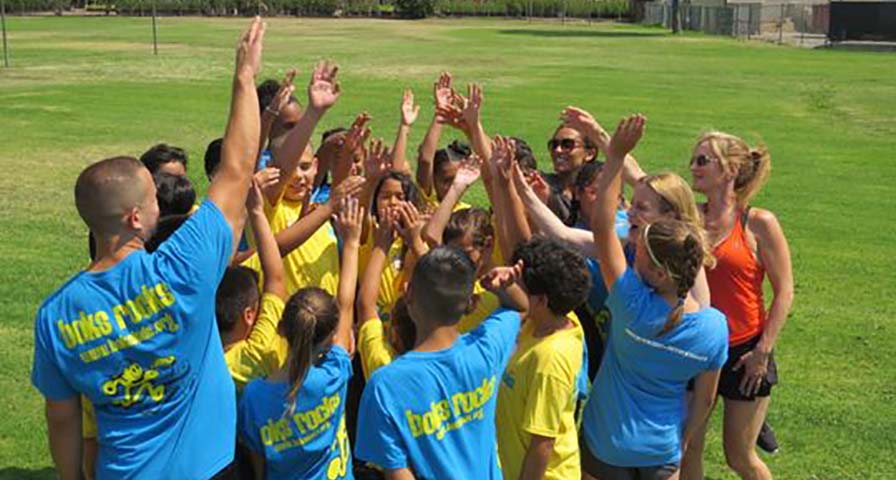Fewer than one in three Americans meet standards
Originally published Nov. 12, 2018 in USA Today.
By Jayne O’Donnell
Less than a third of Americans, and only one in five teenagers, meet new physical fitness guidelines issued by the federal government Monday, the Department of Health and Human Services said.
The guidelines, which officials said could be easily achieved by most, recommend the same level of exercise as the original standards released in 2008 but without the expectation that the physical activity occur in 10-minute blocks.

Kathleen Tullie, Reebok’s director of social responsibility and founder of the company’s BOKS school fitness program, is shown with students at Gladstone Elementary School students in Azusa, Calif. in July 2017. (Photo: BOKS)
They call on adults to get at least 150 minutes of moderate-intensity aerobic physical activity and two sessions of muscle-strengthening activity each week. Children ages 6 through 17 should get at least 60 minutes of moderate-intensity aerobic physical activity per day and three sessions of muscle-strengthening per week.
Moderate-intensity activity includes walking briskly, riding a bike on level ground with few hills and playing doubles tennis, according to the Centers for Disease Control and Prevention.
Muscle-strengthening activity includes lifting weights, “heavy gardening,” such as shoveling, and yoga.
Cardiologist William Kraus, a Duke University medical school professor who served on the advisory committee for the guidelines, said the 10-minute block was removed because it could have discouraged some people who didn’t have that much time from moving.
He noted that parking farther from entrances and taking the stairs count as exercise.
The guidelines emphasize decreasing sitting time for adults. Children younger than 6 years old were included for the first time.
The guidelines and related reports, published Monday in the Journal of the American Medical Association, say the failure to meet the recommended levels of aerobic physical activity leads to nearly $117 billion in annual health care costs and 10 percent of all premature death.
HHS called on employers, the medical care industry, youth sports leaders and technology companies to help get people to be more active.
Still, the lack of what Reebok’s director of social responsibility Kathleen Tullie called “actionable or accountability standards” reduce the impact the guidelines can have, she said.
“There is no mechanism in place requiring kids to move during school and holding school’s accountable,” said Tullie, founder and executive director of BOKS, a school-based fitness program. “We still prioritize the core academic subjects over the health and wellness of our children. This has to change.”
Assistant Health Secretary Brett Giroir called the guidelines “truly a call for action.”
Much more is known about the benefits of exercise since the guidelines were first released 10 years ago, Giroir said.
Back then, he said, HHS knew only that exercise helped reduce the incidence of breast and colon cancers. Now, it is known to help against six other cancers, including stomach and esophageal cancer. It helps reduce anxiety, blood pressure and Alzheimer’s disease and improve brain function and learning.
President Donald Trump issued an executive order in February to develop a national strategy to expand opportunities for kids to participate in youth sports, encourage regular physical activity and active play and promote good nutrition. HHS plans to fund community programs that increase sports participation in the “coming months.”
Jim Baugh, who founded the fitness advocacy, nonprofit group PHIT America, said even the dire picture painted in the federal reports may be too optimistic. He said he wishes there was more focus on what schools – which regularly eliminate physical fitness in favor of teaching time – could do to address the problem.
“They’re showing how bad America is, but it may be even worse,” said Baugh, a former president of Wilson Sporting Goods. “The inactivity pandemic is getting worse, especially for low-income Americans and kids.”
Russell Pate, a professor in the University of South Carolina’s exercise science department who was on the advisory committee, agreed schools need to take action.
The new guidelines urge schools and colleges to offer physical education, after-school sports, public access to school facilities after school, expanded intramural sports and other opportunities for campus recreation. Pate said he’s “very hopeful” these actions will be “widely adopted over the next decade.”
Seeking IHT Spirit System information?




